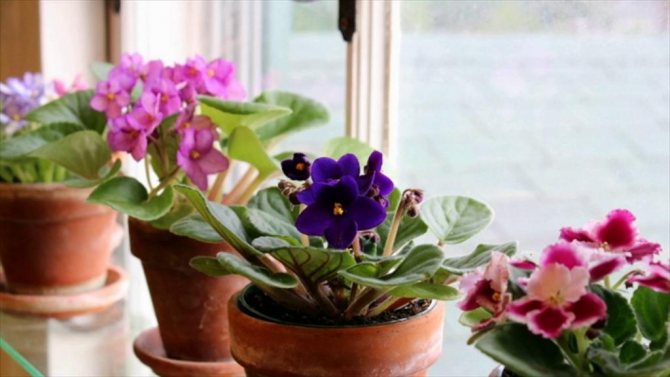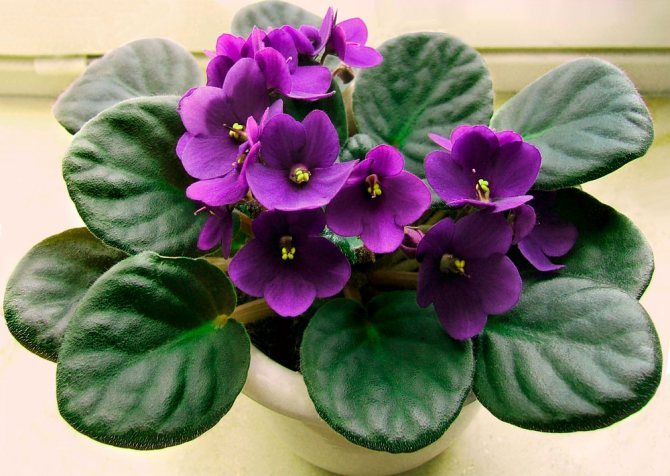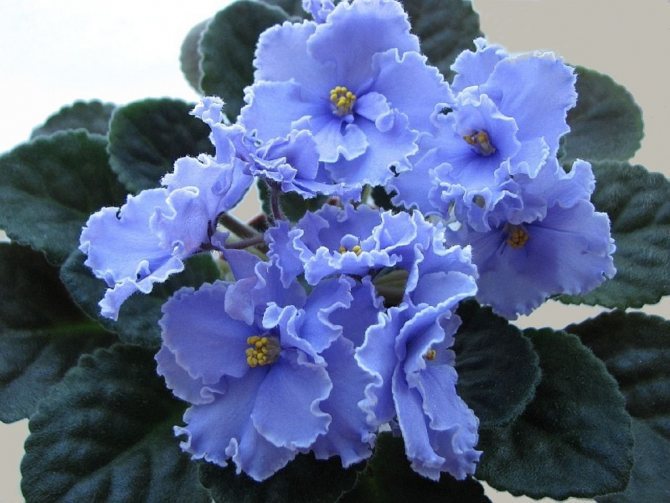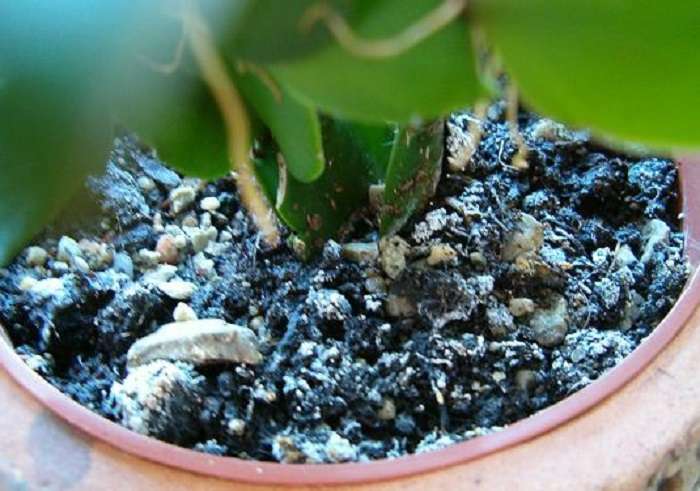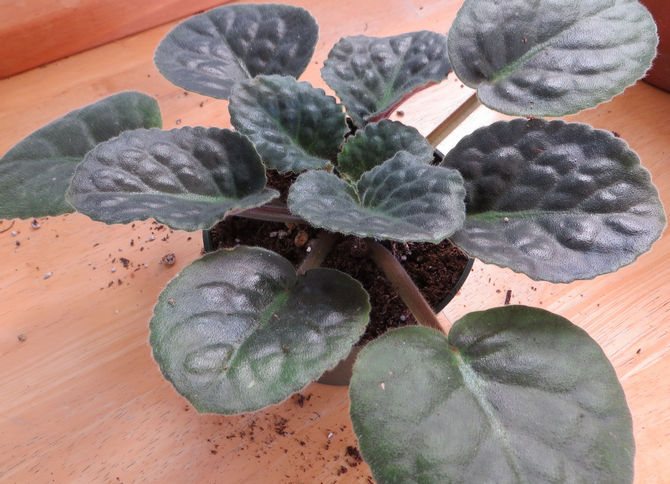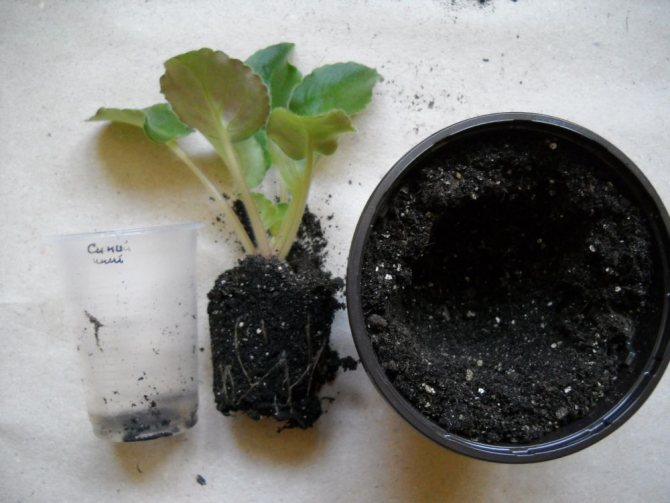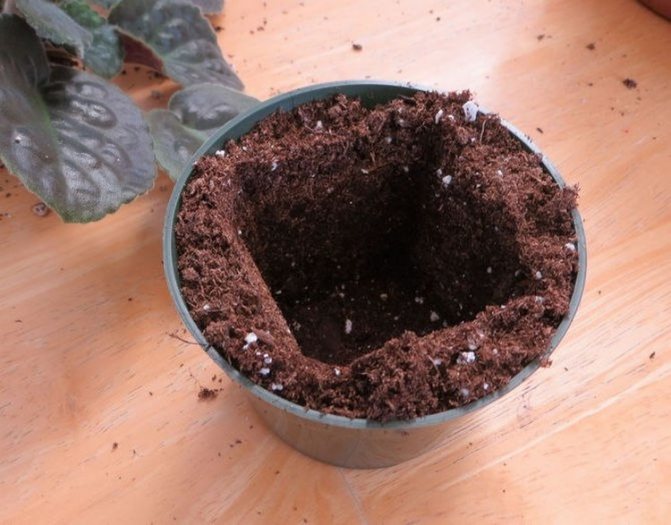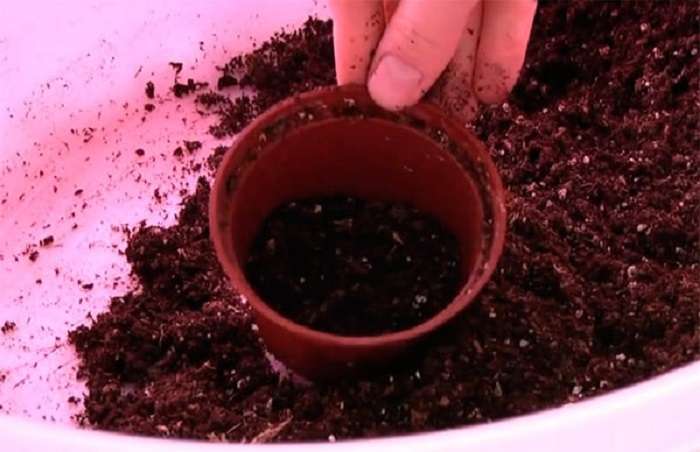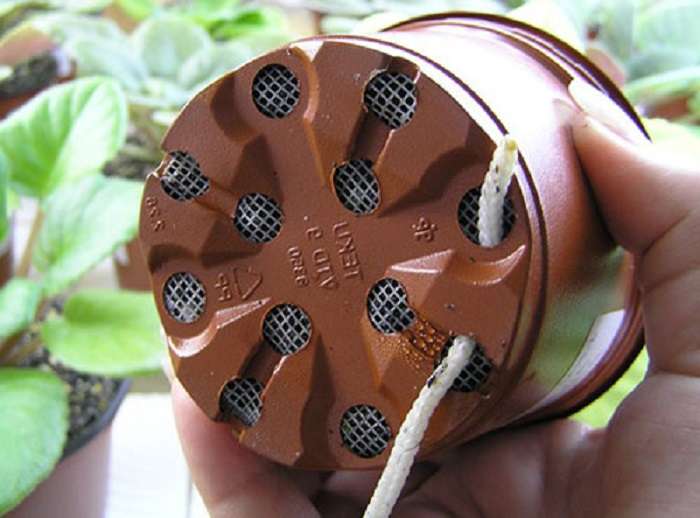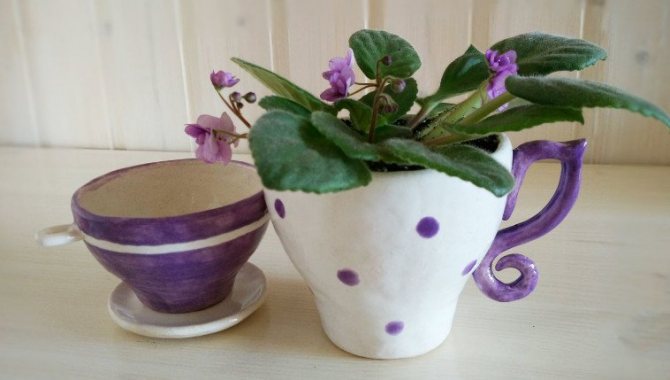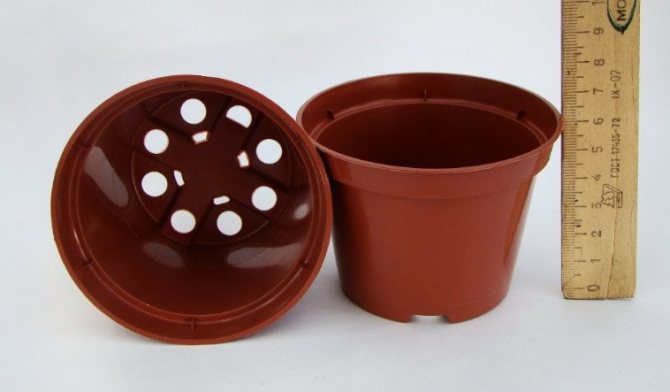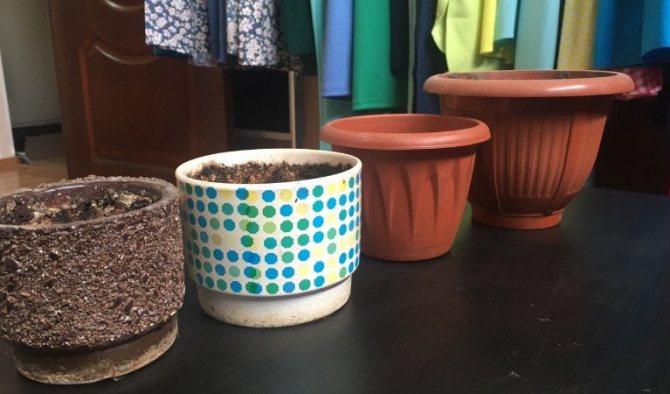Everyone loves to enjoy the beautiful bloom of violets. What colors they just do not exist: red, white, purple, pink and others. The buds of violets are curly, terry, often there are two-color violets, for example, white with a combination of a different color, as in the photo. But in order for the violets to be healthy, they need proper care. But, unfortunately, not all growers adhere to all the requirements for caring for these flowers. In our article, we will talk about transplanting violets at home step by step.
Transplanting violets at home
At home, the container is changed annually. For 12 months, the soil is severely depleted, losing most of the nutrients. The earth cakes and does not accept moisture well or leads to its stagnation. In such conditions, the flower quickly begins to rot or dry out. If the saintpaulia grows quickly, it can completely fill the container with the root system, which will also damage its condition: the leaves become small, darken, and stretch. To prevent weakening, it is necessary to transplant into a new pot.
Experts note that the annual change of the container also allows you to achieve constant flowering. The plant will receive enough nutrients to form new inflorescences.

Determining the need for a violet transplant
It is easy to understand from the state of the flower that a transplant is required. This is indicated by the following signs:
- the appearance of a white coating on the surface of the soil;
- growth of the root system to such a state that it braids the entire container;
- color change of leaf plates from green to brown;
- reduction in foliage size or loss of foliage;
- excessive extension of the trunk;
- compaction of the earth in the container.
Sometimes the need to change the pot is indicated by the long absence of flowering. However, the violet can give buds during illness or when there is a lack of nutrition. If flowering has begun, and the soil mixture needs to be urgently updated, the buds and opened flowers are cut off.
Experienced florists recommend not waiting for the first signs of the death of a houseplant, but transplanting every year according to the plan. This will keep the violet in good health at all times.
Is it allowed to grow several Saintpaulias in one pot?
Often gardeners are interested in whether different varieties of violets can grow in the same pot. In principle, this is permissible. The main thing is that the sizes of the outlet of the varieties are approximately the same. However, some flower growers advise against planting crops in one flowerpot. After all, if you plan to cultivate two violets in a pot, then you will need a spacious one to choose a container. And Saintpaulia prefers tightness. In a large container, all the energy of the violets will go to the development of the root system. As a result, both plants will not bloom.
The violet looks very delicate and beautiful. It can often be found on the windowsills of city apartments and private houses. But to get a good, symmetrical plant with abundant flowering, you need to find a pot that is perfect in size and made from good material. It is real to make a flowerpot and independently from clay, gypsum or weave from branches of plants. See the article: Indoor ficus - popular types and main rules for home care.
Terms of transplanting room violets
The pot needs to be changed in the spring, in April or May. It is also allowed to carry out the procedure in late February, early March or during the fall. At this time, the air temperature is optimal, and the daylight hours are quite long. It is strictly forbidden to disturb the plant in summer. In conditions of strong heating and low humidity of the soil and air, the violet can take root badly and die.
Winter replanting is allowed, but only if phytolamps are used. They should extend daylight hours, especially in December. With a lack of lighting, the flower will take root just as badly as at elevated temperatures. In February, additional lighting is practically not required if the florist does not live in the northern regions.
Do not repot the plant during flowering. If buds appear on the outlet, this indicates a sufficient content of nutrients in the soil. It is necessary to wait until the flowering period has passed and change the pot after it. An exception can be made only if the saintpaulia is affected by a fungal or bacterial disease, pests. In this case, the flower is carefully taken out of the pot, trying not to damage the root system, the inflorescences and buds are cut off, and then carefully placed in a new container without removing the old earthen coma. This method is called the transshipment method.
Violet transplant according to the lunar calendar
The satellite of the Earth significantly affects the development of plants. Depending on the phase, the moon can lead to an increase or decrease in the circulation of sap inside the plant. Experienced growers use the lunar calendar to increase the chances of a successful planting. It is best to change the earthen ball during the waning moon phase.
| Moon phase | Necessary actions |
| Growing | Change the soil and capacity, monitor the development of the roots. Water more often, regularly apply top dressing. |
| Decreasing | Transplant, paying special attention to organic fertilizers. Limit watering. |
| New Moon / Full Moon | Do not repot the plant. It can take root badly and die. |
How to plant young plants
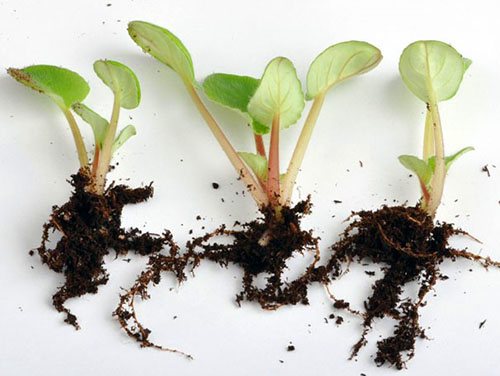

The sockets obtained from the rooted leaf are transplanted after 2 - 3 months into separate cups, where they will grow for a long time until they bloom and the pot becomes small.
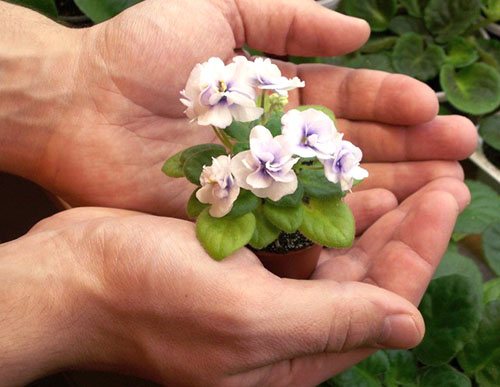

The main thing in keeping such babies will be the creation of favorable conditions for development - good lighting, temperature conditions and moderate soil moisture.
Violet transplant with substrate replacement - video
Without a doubt, the violet or saintpaulia is one of the most popular indoor plants. Blooming violet looks very touching and helps to create coziness. Lovers of these indoor plants collect whole collections of plants with different colors of inflorescences and leaves, exchange rare specimens and create the most comfortable conditions for violets. Beginning flower growers, purchasing a violet, should be prepared for the fact that the plant will require attention and care, but in return, it will delight you with its flowering almost all year. One of the important factors affecting the appearance, flowering and general comfort of the plant is just the timely transplantation of violets and the rejuvenation of the bushes. In this article, we will talk about when to replant a violet, how to do it correctly so as not to put a lot of stress on the plant.
Transplant methods
There are three ways to transplant Saintpaulia. The first and most popular is a tank change with partial soil replacement. This procedure is carried out routinely if the violet is completely healthy and does not bloom. Algorithm of actions:
- Prepare a pot with a slightly larger diameter.
- Fill drainage to the bottom of the tank, then fill in the soil mixture.
- Make a recess for the root system.
- Gently remove the violet from the old pot, shake off the soil, which easily comes off by itself.
- Place the flower in a new pot, surrounding the roots with new soil.
With this method, the lower part of the plant is practically not damaged, and the transplantation is as gentle as possible. In this case, the soil is replaced by more than 50%, which allows for the supply of new nutrients and improves the condition of the room violet.


The second method involves a complete replacement of the soil. It should be applied if the soil is severely depleted. The need to completely change it is indicated by the presence of a white coating on the surface, browning of the leaves, and bare trunk. This option is traumatic for the roots, but it allows you to achieve the maximum influx of nutrients. How to carry out the procedure correctly:
- Remove the plant from the soil. Remove all soil, as well as rotten or dried roots.
- Carefully cut off too large, dry, overly soft or brown leaf blades. Sprinkle the cut with crushed coal or ash.
- Prepare a new container: pour drainage, then half of the soil mixture.
- Place the violet in a new container, surround with soil and lightly tamp it. Add the second half of the mixture so that it almost reaches the lower leaves.
- Tap the pot lightly to distribute the soil more evenly.
- After a day, water the saintpaulia abundantly at the root, add a little more earth if necessary.
As for the third option, it is used if the plant is in a state of flowering, but urgently requires a transplant. The earthen lump is completely preserved, but the container is replaced with a more voluminous one. How to replace step by step:
- Moisten the soil in an old pot, being careful not to touch the leaves with moisture, and carefully pull it out entirely.
- Pour drainage into a new container, which should exceed the old one in diameter. Then place the previous pot on top of it and pour soil between the walls of the two containers.
- Place an earthen lump together with the root system of the violet into the resulting recess.
- Check if the ground level is the same.
Features of the process and subsequent care
There are a number of rules according to which it is necessary to transplant a violet.:
- Before transplanting, the container must be thoroughly rinsed with water, regardless of whether it has been used previously or not. In this case, the dishes must be correctly selected. The best material for crockery is plastic.
- With the correct transplantation of Saintpaulia, its lower leaves should be in contact with the ground.
- Do not water the violet immediately after planting. This can lead to rotting of the root system. To keep the soil moist, cover it with a transparent plastic bag.
- It is advisable not to neglect plant rejuvenation procedures during the transplantation process. In order for the violet to take root quickly and painlessly, it is also necessary to properly care for it in the first time after transplantation.
This requires:- To ensure normal growth, it is necessary in the room in which the transplanted violet is located, to maintain a moderate humidity (approximately 50%) and a temperature above 21 degrees Celsius.
Daylight hours should be at least 10 hours.
- It is necessary to protect the flower from sudden changes in temperature and drafts.
- Watering should be done carefully and in moderation. Do not spray the leaves.
- After 2-3 weeks, you can begin to introduce top dressing, first in small doses, and then gradually increase to normal.
You can read about the features of caring for this beauty in our article.
Capacity requirements
Violets don't need deep pots. Their root system expands upward, so the maximum depth of the container is 10 cm.As for the diameter, depending on the age and size of the flower, it is necessary to purchase a container of 5-9 cm.For miniature varieties, a container 5 cm deep and 4 cm in diameter will be sufficient.
Particular attention should be paid to the material of the container. The most common options are:
- Plastic. Inexpensive and easy-to-use material. The light weight allows the pots to be placed on glass shelves or fragile window sills. In stores you can find a wide variety of shapes and colors, patterns, textures. The only drawback is the lack of ventilation. If the manufacturer does not provide openings for air and drainage in the container, they must be made using a highly heated nail. It is best to purchase a special container for violets. Such models are equipped with a convenient drainage system.
- Clay. Clay containers are quite heavy and bulky, so they are not suitable for fragile pots and glass racks. On the other hand, they retain heat well, retain water at the roots and allow the necessary amount of air to pass through. Such a pot can be purchased if the buyer's budget is not limited.
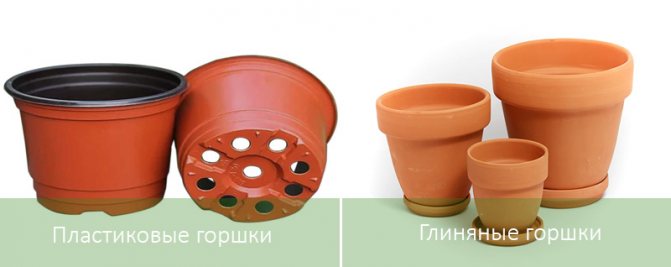

Convenient if the container is transparent. The owner will be able to control the size of the root system and transplant in a timely manner.
Plant rejuvenation
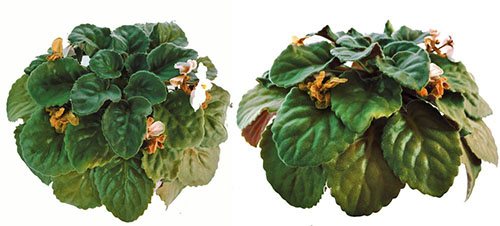

In order to make an old plant bloom profusely, it can be rejuvenated. Signs of aging will be the bare bottom of the trunk, which becomes clearly visible. When rejuvenating, you can remove some of the roots and leaves, then plant in a smaller bowl. But usually only the ground part is preserved, cutting off the trunk with the leaves dried from below with a sharp disinfected knife.
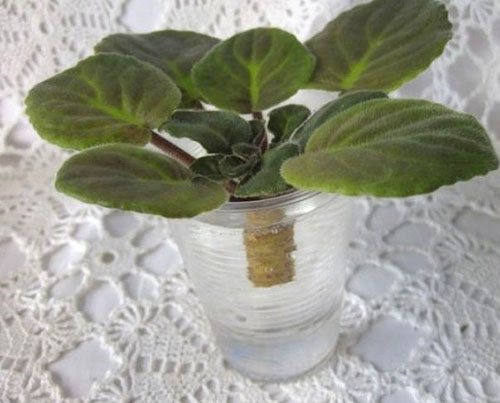

The plant is planted a little, and then dipped in a glass of water. When a good root system is formed, the plant is planted in a prepared container.
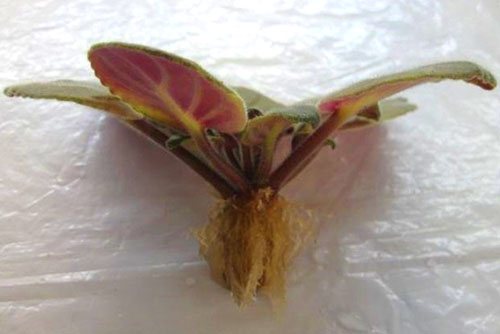

The transplant is carried out in the same way as when rooting a plant using the method in the step-by-step instructions. You need to take another dish, since the root system is small and until it fills the container, the violet will not bloom. At the same time, you can remove some of the sheets and propagate the plant you like with them.
Nutrient substrate composition
In flower shops you can buy a special mixture for violets. It includes the necessary minerals and biohumates. Sometimes the substrate is prepared on its own using the following ingredients:
- leafy land;
- peat;
- coniferous soil;
- sod land;
- river sand.
The required proportions are 2: 1: 1: 1: 1. To improve drainage, it is best to add a handful of crushed or fine charcoal.
The soil must be treated to remove fungus, bacteria and pest larvae. The best option is to bake in the oven for 20-30 minutes at a temperature of +200 ° C. If it is inconvenient to use the oven, it is necessary to treat the soil with boiling water.


Violet transplant technology
Before starting a transplant, several preparatory steps must be taken. New containers need to be processed to reduce the likelihood of developing diseases. You can moisten the inner cavity with a solution of potassium permanganate, and wash it off after a few hours. Clay containers are additionally cleaned of salt deposits. They need to be left in water for 10-12 hours. You also need to buy drainage. Its role can be played by expanded clay or lumps of medium fraction charcoal.
During transplanting, you need to remove large leaves that can take up nutrients. They are suitable for vegetative propagation.
Mister Summer Resident warns: mistakes when transplanting violets
The violet can die if transplanted incorrectly. Florists often make the following mistakes:
- transplanting into a pot with a diameter of more than 9 cm;
- watering after planting in the center of the outlet;
- too deep or shallow location (leads to rotting of the roots and to a weakening of the rosette, respectively);
- the use of non-sterilized soil contaminated with fungal spores or bacteria;
- wrong choice of substrate components;
- the use of a soil mixture with an excess of nutrients.
The transplanting algorithm is simple, even a beginner in the field of floriculture can correctly perform it. The main thing is to find the right time to change the container and not forget about the nutrient substrate.


